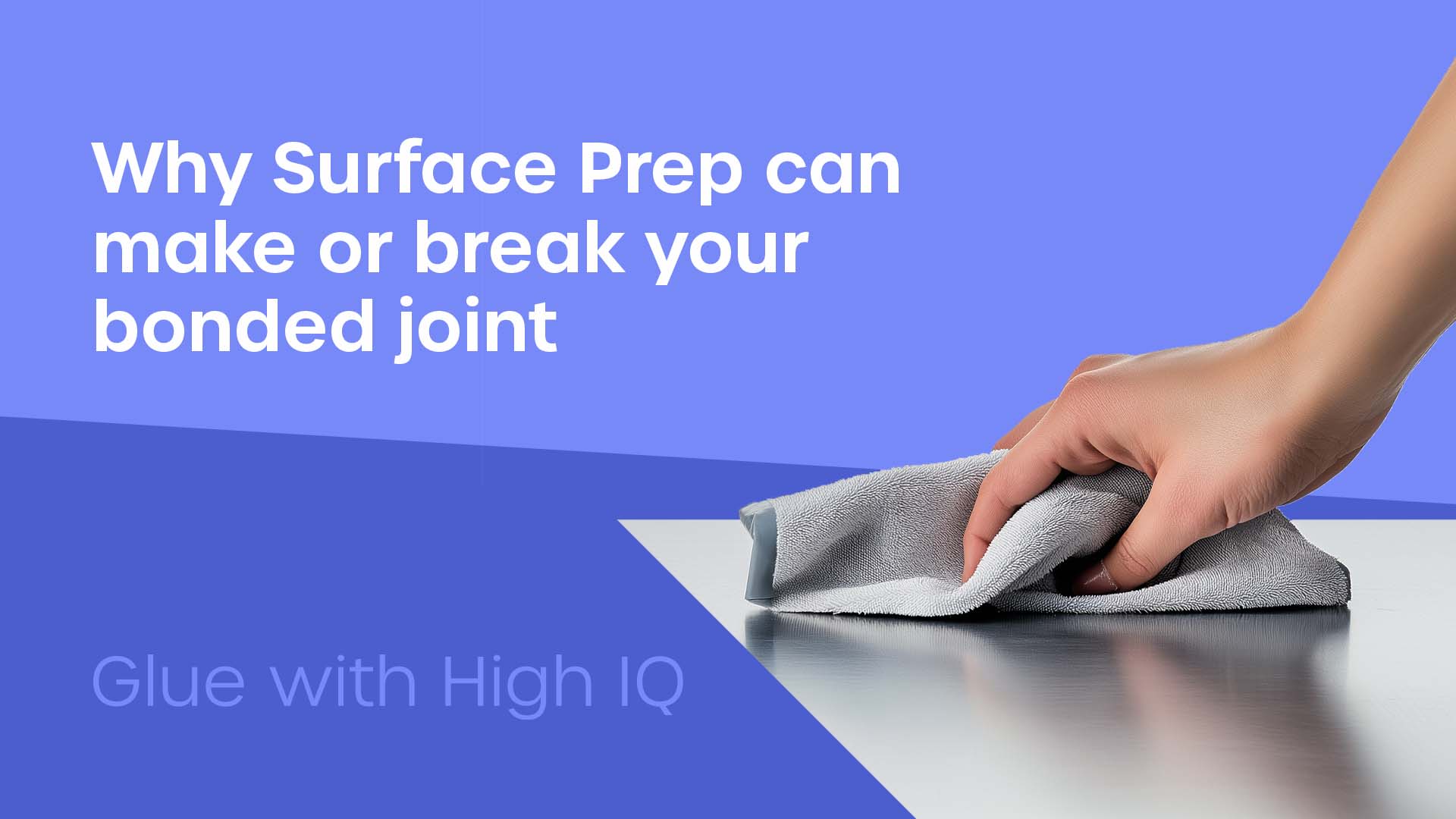Why Surface Preparation can Make or Break your Bonded Joint

The key to all high-quality end products lies in the preparation. Benjamin Franklin's famous quote still rings true. "By failing to prepare, you're preparing to fail".
Adhesive bonding is no different. The key to every strong bond lies in the right preparation. Preparing the right adhesive. Preparing the right joint design. Preparing the right materials.
But that's not all. The right preparation of the surface is fundamental before each bond goes out in the field. Over 90% of bonding errors we see are the result of poor surface preparation.
Here at Forgeway, we manufacture industrial adhesives. We've seen the damage caused by insufficient surface preparation for bonded joints.
In this article, we are going to explain why surface preparation can make or break any bond. No matter how strong the adhesive. No matter how well-designed the joint. No matter how suitable the materials. Insufficient surface preparation will undermine all of these important characteristics.
By the end of the article, you will understand why surface preparation is so important. You will also understand which surface preparation method you will need for your application.
Why is surface preparation so important for bonding?
So we know that surface preparation is important. We understand it significantly decreases the likelihood of bond failure. But we still want to know why.
What happens at a molecular level that can cause the bond to fail?
Let's find out.
We should point out that other methods of joining require similar levels of preparation before you can create a strong joint. Mechanical fixings require precise holes to be drilled into the materials and burrs/swarf removed before painting. Welding will need a clean surface free from contamination to ensure a clean and smooth weld pool and finish with a weld, free from porosity.
The weld example is interesting. It draws distinct similarities to bonding. Contamination is the enemy of a strong weld. It's also the enemy of a strong bonded joint.

It's all because of the adhesion process. Adhesion is the chemical interaction between the adhesive and the material at surface level. Strong adhesion is reliant on compatibility between the material and the substrate.
But even if the material and the adhesive are compatible, contaminants can get in the way. These contaminants can take the form of grease, dirt, or even microscopic fingerprints.
The various forms of 'matter' can interfere with the chemical reaction that is supposed to take place between the adhesive and the material. The contamination essentially blocks the bond from forming.
Whilst removing this contamination is the main aim of surface preparation, it's not the only reason it is so important to a strong bond.
This is because some bonding techniques specifically require the use of certain techniques so the chemical reaction can take place and form a high-strength bond.
The prime example of this is, incidentally, the use of primers. Some polyurethane-based adhesives will not form a strong bond without a primer. Other surface preparation methods like abrasion, plasma, or flame treatment can all play a critical role for some adhesive chemistries to bond well.
To summarise, surface preparation is vitally important because it cleans and prepares the surface to ensure the adhesive can form a strong chemical bond with the material.

What are the different methods of surface preparation?
Surface preparation methods can vary widely depending on the materials involved and the application requirements. This section will look at the three main methods of preparing a surface before bonding. Then, we will review some of the other, less common methods.
Cleaning with Solvents
1. Cleaning with Solvents
The most basic form of surface preparation is cleaning the surface with a solvent such as acetone or isopropyl alcohol (IPA). These chemicals remove oils, grease, and other contaminants that could interfere with bonding.
Before use, every bonded joint will need to be cleaned with a solvent-based wipe.
- Advantages: Solvents are easy to use, relatively inexpensive, and effective for most materials.
- Disadvantages: Some materials, especially certain plastics, are prone to environmental stress cracking when exposed to solvents. Additionally, it is reliant on operators following the process correctly otherwise it can leave an inconsistent surface.

2. Abrasion
AbrasionAbrasion is a more aggressive form of surface preparation that involves mechanically roughening the surface to increase its surface area and improve the adhesive’s ability to bond.
- Advantages: Abrasion removes oxidation layers, old coatings, and surface contaminants while creating a textured surface that promotes better mechanical interlocking of the adhesive.
- Disadvantages: Like cleaning with solvents, abrasion can also be inconsistent. It can leave contamination in pits and craters on the material's surface that is difficult to remove.

3. Priming the surface
Primers are often used to enhance adhesion, particularly when bonding difficult materials like plastics or metals with low surface energy. They are also required for some adhesive chemistries to effectively form a strong bond to the material.
- Advantages: Primers can significantly improve bond strength and durability, especially in challenging conditions. They also make a strong bond possible with non-specialist adhesives and certain 'unbondable' materials.
- Disadvantages: Applying a primer adds an extra step to the process, increasing time and complexity. The added layer can sometimes interfere with the bonding process, introducing another element of risk.
Other Surface Preparation Techniques
- Plasma Treatment: Plasma treatment cleans and activates the surface by exposing it to ionized gas. This method is highly effective for difficult-to-bond materials like polyethylene and polypropylene. There are similar forms of treatment like flame or corona treatment which produce a similar result.
- Pros: Increases surface energy and removes contamination, leading to better adhesion.
- Cons: Requires specialized equipment and can be expensive. It will also add another process during production.

- Chemical Etching: Involves applying an acidic solution to remove oxides and create a micro-roughened texture. Commonly used for metals.
- Pros: Highly effective for metals and can significantly improve bond strength.
- Cons: Involves handling hazardous chemicals and requires careful control of the process.

- Grit Blasting: Similar to abrasion but involves blasting the surface with fine particles to clean and roughen it.
- Pros: Creates a consistent, highly textured surface ideal for bonding.
- Cons: Can be too aggressive for some materials and requires proper containment to manage dust and debris.

Which surface preparation method do you need for your application?
Not every surface preparation method is compatible with all materials and applications. And while every application is unique, we have some guidance to help you understand the dos and don'ts of surface preparation.
Here is a chart which briefly outlines where you can, must, and must not use certain surface preparation techniques.

If you're struggling to find the right solution, maybe it's more than the surface preparation. You might need to look at your bonding process and analyse where it's going wrong.
An adhesive and bonding expert can help you find the right solution after a few questions. Click the button below to reach out to the right expert.
Thomas is the Content Manager here at Forgeway. Thomas' job is to translate the technical jargon from the ivory tower of academia into easy-to-read content that everyone can understand. Forgeway's mission is to answer every question our customers and prospective clients ask, or are apprehensive to ask.



